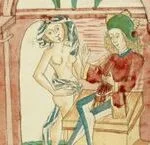Shavuot 2025: Why Do We Group Jewish Holidays Together?
Jewish celebrations are frequently paired—such as Rosh Hashanah with Yom Kippur, or Passover with Shavuot—to emphasize the interconnected themes within our tradition. For instance, the period between Rosh Hashanah and Yom Kippur, known as the Ten Days of Repentance, frames an intense time for self-reflection and renewal.
Likewise, the 49-day interval linking Passover and Shavuot, traditionally called the Counting of the Omer, binds the exultation over the Exodus with the responsibilities embraced at Mount Sinai. This connection reminds us that the liberation we celebrate must be balanced by the duty each person has toward the community.
The concept is similar to how national holidays might be linked—imagine counting the days from an independence celebration to a day honoring founding principles, which in turn deepens the meaning of both. In our tradition, freedom when left to stand alone can lead to an unbalanced pursuit of self-interest, whereas communal responsibility ensures its proper expression. This balance is also reflected in the way many Jewish prayers address the community in the plural form, especially during the most introspective parts of the year.
Finding Integration Through Holiday Trios
Beyond pairings, we also recognize the significance of grouping holidays in threes. Consider the trio of Purim, Passover, and Shavuot. In the same way that Rosh Hashanah and Yom Kippur work together to initiate a new year through thoughtful introspection, the inclusion of a third theme provides further balance throughout the year.
During Sukkot, for example, we celebrate with joy and feasting in stark contrast to the fasting and solemn self-examination of Yom Kippur. Observing only a pair without the counterpoint of Sukkot would offer only a partial perspective on how we ought to direct our energies and responsibilities over the course of the year.
Linking Individual Freedom With Communal Duty
The 49-day period of the Omer serves as a bridge between the liberation celebrated at Passover and the communal obligations revealed on Shavuot. It is during this time that the emphasis shifts from individual freedom to a broader sense of collective responsibility.
An additional layer is brought in by the themes associated with Purim. The story of Esther, in which the heroine conceals her Jewish identity for much of the narrative, introduces the notion of hiddenness. On Purim, masks are worn and hiddenness is celebrated—parallels to the way winter snow covers and conceals the earth.
This theme of concealment carries over into the Passover Seder, where a piece of matzah, known as the afikoman, is hidden at the beginning of the meal and later rediscovered. This act of concealing and then unveiling not only enriches the Seder ritual but also points forward to the revelation experienced on Shavuot at Mount Sinai.
The concept of a hidden divine presence, often described as “hester panim” (the hiding of God’s face), challenges us to view moments of crisis or suffering not as times when the divine is absent but rather when it is concealed, awaiting rediscovery. This dynamic interplay between hiddenness and revelation suggests that the aspects of our lives we may feel have been overshadowed have the potential to emerge in full light once again.

Rockin’ the faith, one verse at a time!
Growing up, the Bible’s stories deeply impacted me. Now, with over 15 years of preaching experience, I blend timeless teachings with modern technology, making them relevant for today’s world.
Bible Hub Verse is my platform to share historical insights and thought-provoking articles, exploring both familiar and uncommon Christian topics. My passion is building a welcoming online space for everyone to learn, grow in their faith, and discover the Bible’s enduring message.
Join the journey!
God bless you.







